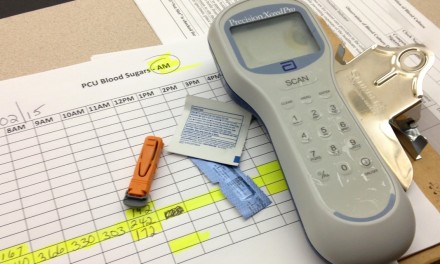It's safe to say every hospital has a need to text orders to some degree. Now that the Joint Commission has reversed their position stated in a FAQ page in 2011 and said texting orders is now okay (downloadable pdf), where do we go from here?
There have always been scenarios where caregivers need new or revised orders to address a patient care issue more quickly than the typical frequency of physician rounding and sitting down to interact with the CPOE system. Common use cases include the need to change alarm parameters to better fit the patient and reduce non-actionable alarms, interventional orders in response to a patient's clinical deterioration, or a response to new diagnostic data. Achieving excellent patient outcomes while keeping a lid on length of stays require effective and timely staff responses to improvements or deterioration in a patient's condition. This is why verbal orders arose, and why texting also became popular.
This post provides a penetrating review the commission's reversal of their texting orders ban. Two key considerations will underly this review: product requirements and what requirements providers must meet to use a secure messaging app for orders.
While the commission says their concern about texting orders revolves around privacy and security, many of the requirements and advice laid out in the Update: Texting Orders has nothing to do with privacy and security but rather workflow and patient safety.
Let's start with the commission's basic statement: "Licensed independent practitioners or other practitioners in accordance with professional standards of practice, law and regulation, and policies and procedures may text orders as long as a secure text messaging platform is used and the required components of an order are included.
If you have a system is is suitable? If you are looking to adopt, what are the requirements?
JC requirements list
- could be met in 2011
- Perhaps the most important requirement, "required components of an order are included [in the order text message]" isn't on the list of text messaging platform requirements
- last bullet of secure texting software requirements is vague?
- Missing items, esp required fields for required order components and workflow automation
JC Advice:
- attestation can come from RFP if you're looking to buy a messaging solution; an installed vendor can provide text
- Document when appropriate: Specific use cases and/or characteristics of specific use cases
- Monitor frequency of use: could be tough, systems likely offer more than one work around to meet this requirement, if not an actual feature. Check the consequences and implications.
- Texting policy and procedure compliance management - important but often outside the scope of purchase criteria
- Risk management: again, important but what to include?
- Training
What's the difference between a requirement and advice?
How did we get here?
It appears that in 2011, the Joint Commission was referring to the SMS texting service provided by carriers, like AT&T and Verizon, when they used the term texting. Certainly SMS texting of electronic patient health information was and still is not sufficiently secure and private to meet HIPAA requirements. In a rather egregious lapse, the Joint Commission did not mention the numerous texting applications that were available in 2011 that did meet HIPAA requirements. In fact, HIPAA secure messaging apps were not even mentioned in the Joint Commissions message about texting orders as being verboten.
The Joint Commission dropped the texting orders ban hammer in a brief FAQ on their web site that is long gone. So, this statement of disapproval was not a considered, thoughtful explanation of exactly what kind of "texting" the Joint Commission was referring to in their statement, nor did they discuss any requirements for the implementation and use of secure text messaging apps for orders. Needless to say, their muddled approach to banning the texting of orders resulted in a certain amount of confusion, and people were not happy.




Recent Comments